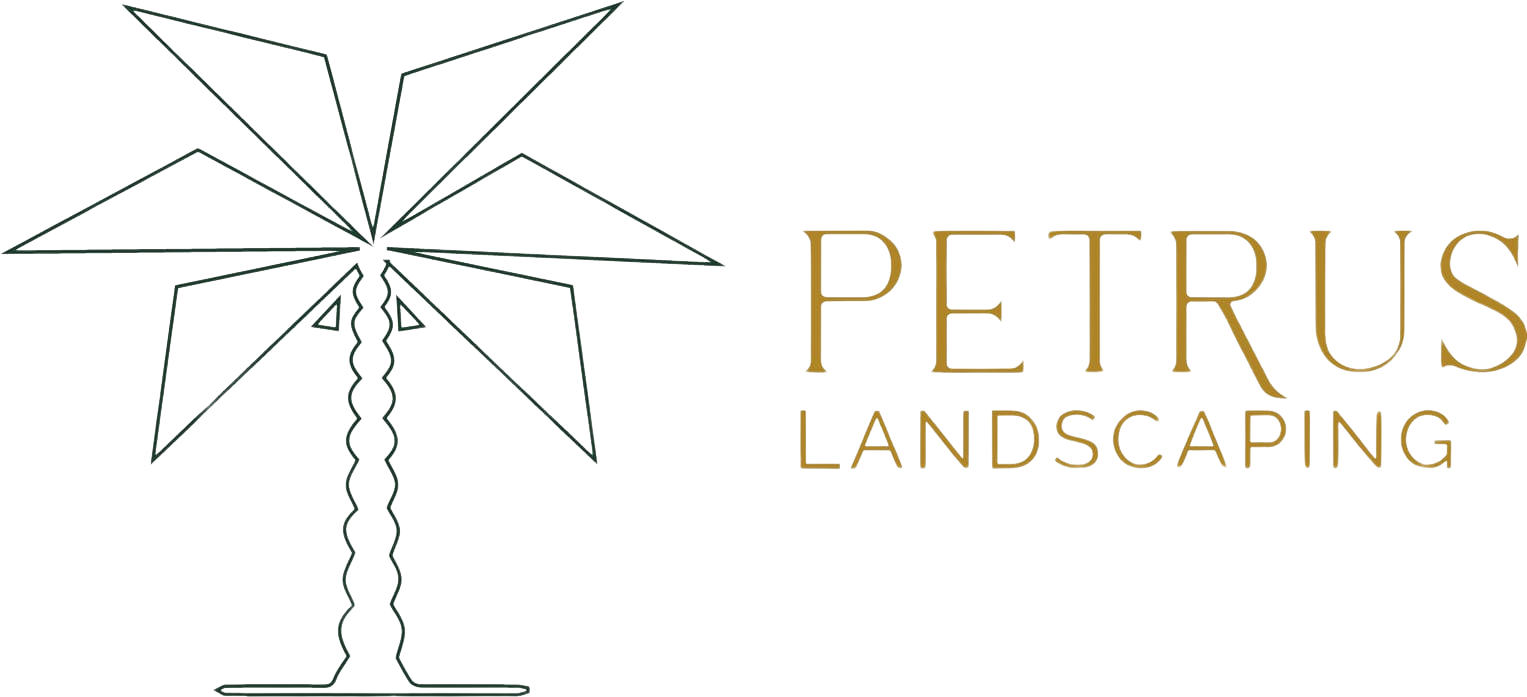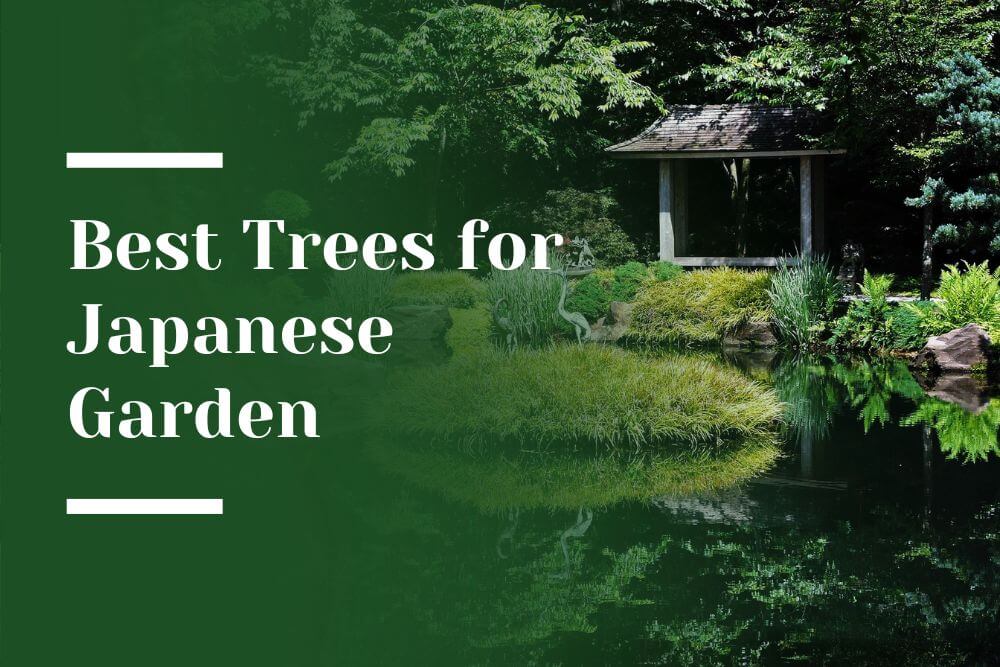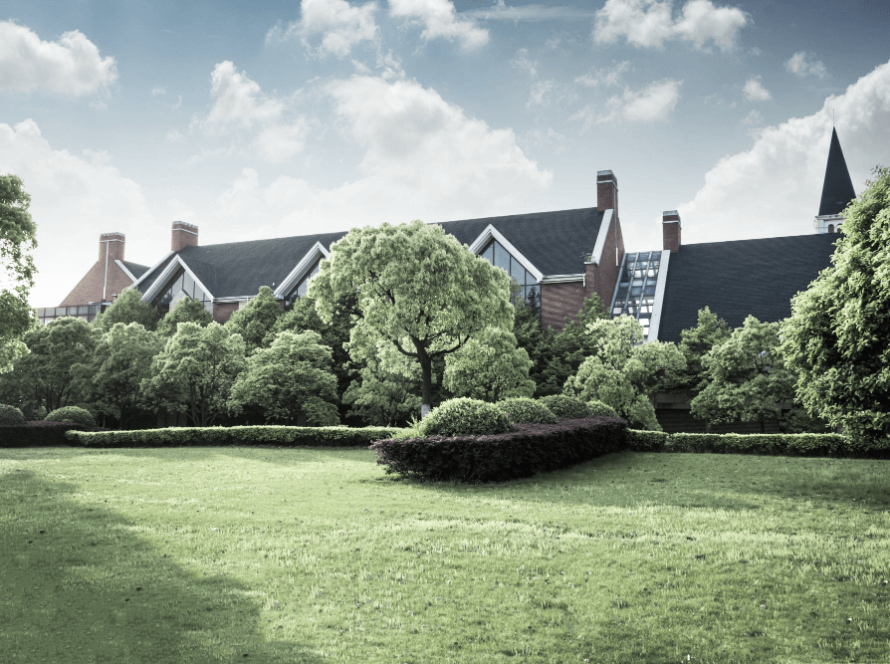For centuries, Japanese gardens have been designed to evoke this sense of peace and connection with nature. Inspired by the beauty of the natural world, these gardens are not only visually stunning but also deeply symbolic. In the Bay Area, where the climate allows for a diverse selection of plants, you have the perfect opportunity to create your own Japanese-inspired retreat.
Whether you’re designing a serene space for quiet reflection or enhancing the landscape of a luxurious estate, the right tree selections will shape the experience of your garden. From the iconic Japanese Maple to the elegant Star Magnolia, each tree brings a unique character and seasonal charm. Ready to get started? Let’s explore the best trees for designing a Japanese garden in the Bay Area.
Why Trees Are Essential in a Japanese Garden
Trees play a crucial role in Japanese gardens, symbolizing resilience, beauty, and the passing of time. Unlike formal Western gardens, Japanese gardens are designed to feel natural and harmonious, often imitating the landscapes of mountains, rivers, and forests.
Choosing the right trees adds structure and seasonal interest. Cherry blossoms mark the arrival of spring, while Japanese maples dazzle with vibrant fall foliage. Pine trees provide year-round greenery and a sense of strength. Each tree has its story to tell, making your garden a reflection of nature’s timeless beauty.
Top Tree Picks for a Japanese Garden in the Bay Area
Here are some of the most beautiful and meaningful trees to incorporate into your Japanese garden design.
Star Magnolia (Magnolia stellata)
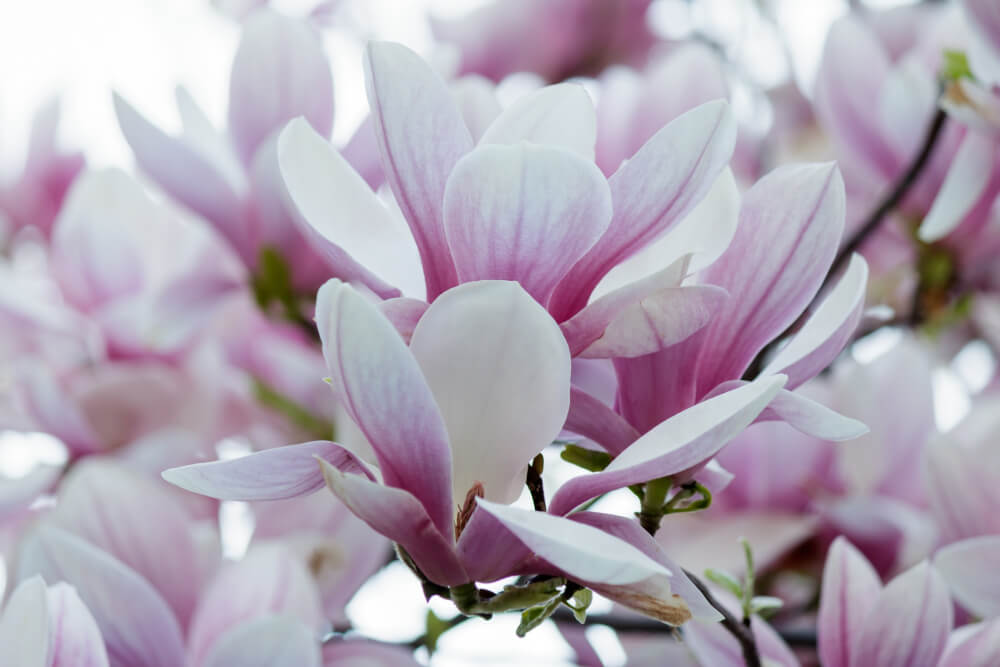
Photo Source: Freepik
Star Magnolias are a quintessential addition to any Japanese garden, offering graceful white blooms that symbolize purity and tranquility. Native to Japan, these deciduous trees grow to about 20 feet tall and 15 feet wide, making them an excellent choice for small or large landscapes. They bloom in late winter to early spring, providing a striking contrast against bare branches and serving as an early sign of spring’s arrival. Their star-shaped flowers are a delicate yet vibrant feature, adding to the serene ambiance that defines traditional Japanese gardens.
For a thriving Star Magnolia, plant it in full sun to partial shade, in nutrient-rich soil that retains moisture without becoming waterlogged. These trees prefer slightly acidic soil and benefit from occasional mulching to maintain moisture levels. During the warmer months, regular watering is key to keeping the soil moist. As they mature, their gnarled branches create a sculptural presence in winter, adding year-round interest. In a luxury estate landscape, Star Magnolias offer both structural beauty and seasonal splendor, enhancing the overall elegance of your Bay Area landscape design
Flowering Cherry (Prunus serrulata)
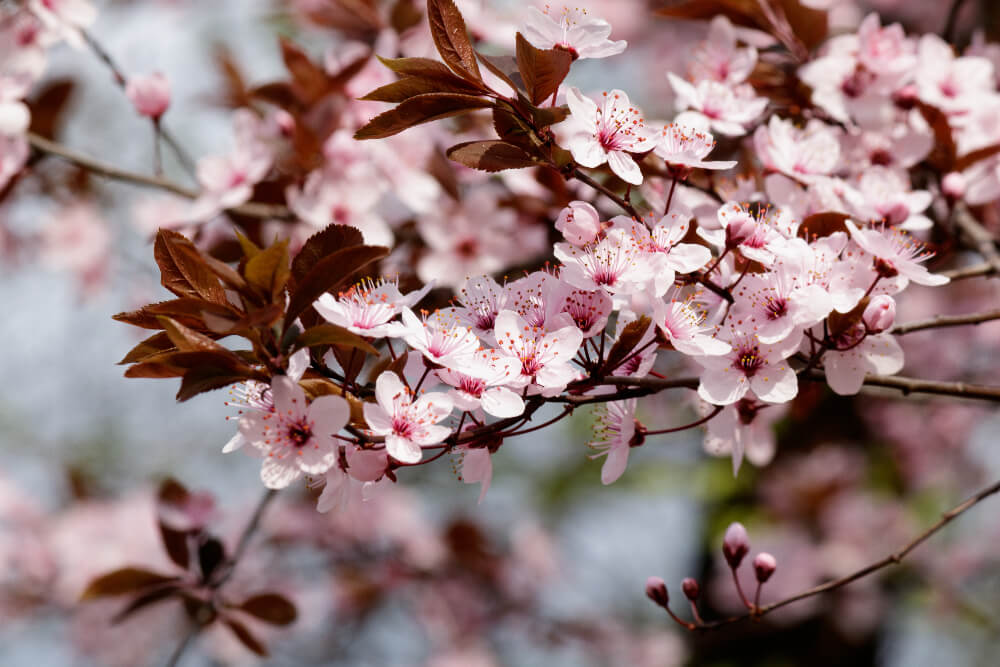
Photo Source: Freepik
Few trees evoke the spirit of a Japanese garden quite like the flowering cherry tree. Celebrated during Japan’s famous Hanami festivals, these trees symbolize the fleeting beauty of life through their delicate pink and white blossoms. In the Bay Area, the ‘Akebono’ cherry tree is a popular choice for its abundant pale pink blooms that arrive in early spring. As the flowers fall, they create a poetic “flower snow” effect that adds a magical quality to your landscape. The contrast between the pastel blossoms and dark branches is a visual masterpiece, bringing elegance and charm to any high-end estate landscaping.
To ensure a healthy flowering cherry tree, plant it in a spot with full sunlight and well-draining soil enriched with organic matter. While these trees are relatively low-maintenance, they can be prone to bark splitting in colder climates with sudden temperature changes. Fortunately, in the Bay Area’s moderate climate, this issue is less frequent. Regular monitoring for pests and diseases, along with annual pruning, will keep your cherry tree flourishing. With its seasonal bursts of color and graceful presence, a flowering cherry is the perfect addition to a thoughtfully designed Japanese garden.
Japanese Maple (Acer palmatum)
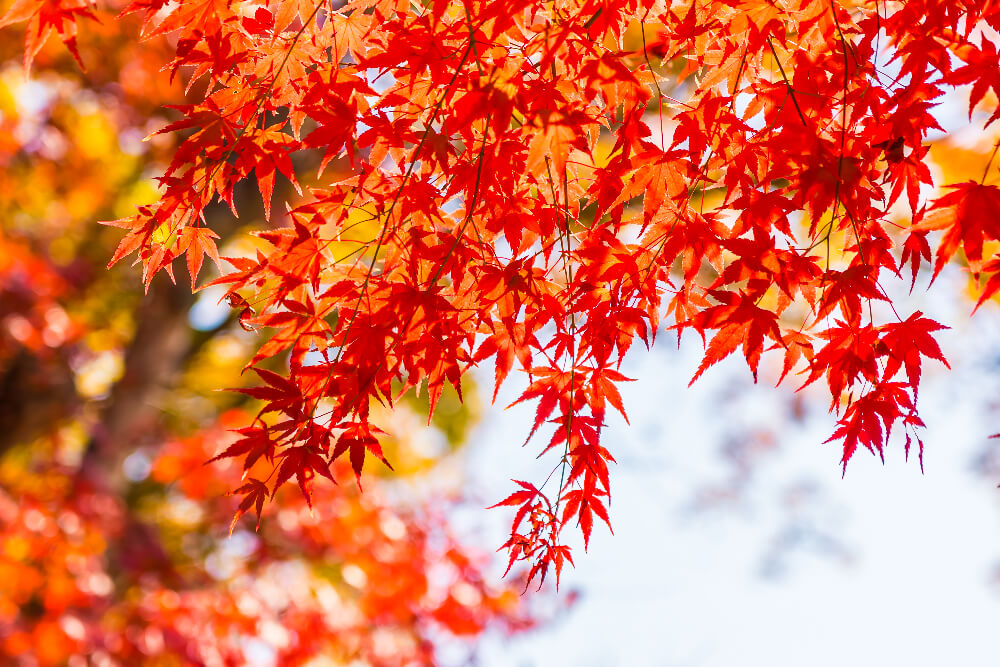
Photo Source: Freepik
A cornerstone of Japanese garden design, the Japanese Maple is revered for its intricate foliage and vibrant seasonal color. Its delicate, hand-shaped leaves turn fiery shades of red, orange, and yellow in autumn, providing a dynamic visual display. In spring and summer, varieties like the ‘Bloodgood’ or ‘Emperor I’ offer striking purple or green foliage. Japanese Maples can be shaped into elegant forms through pruning, adding architectural interest to the landscape. Their graceful branches often arch over water features or frame garden paths, enhancing the sense of tranquility.
In the Bay Area, Japanese Maples thrive in partial shade, especially in hot inland regions. They prefer well-draining, slightly acidic soil and benefit from regular watering, particularly during dry spells. Mulching around the base helps retain moisture and protect the roots. These trees are ideal for smaller gardens or as focal points in expansive estate landscapes. With their timeless beauty and serene presence, Japanese Maples embody the essence of Japanese garden design.
Camellia (Camellia japonica)
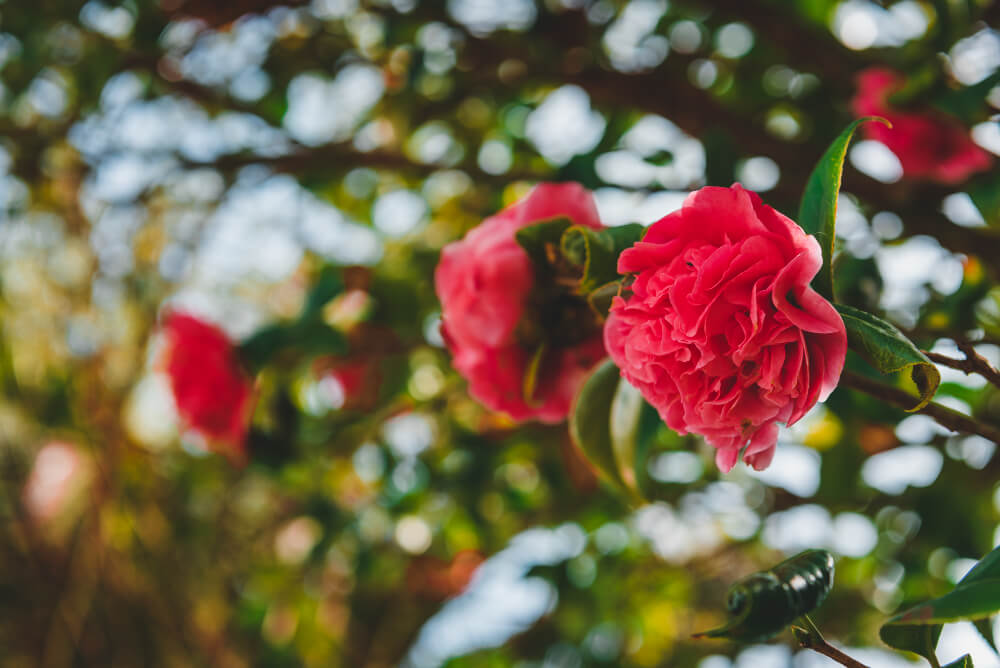
Photo Source: Freepik
Camellias are a favorite in Japanese gardens, admired for their glossy green foliage and vibrant winter blooms. These evergreen shrubs can grow up to 12 feet tall and are available in a range of colors, from soft pinks and whites to deep reds. Blooming in the colder months, Camellias bring warmth and life to the garden when most other plants remain dormant. Their blooms are often seen as a symbol of longevity and faithfulness in Japanese culture, adding deeper meaning to their visual appeal.
Plant Camellias in a partially shaded area with well-draining, slightly acidic soil. They require consistent moisture but dislike soggy conditions, so ensure proper drainage. Regular mulching will help retain moisture and protect the roots. Pruning after blooming will maintain a tidy appearance and promote better flowering the following season. For estate owners seeking year-round beauty in their Bay Area landscape design, Camellias are a refined choice that adds color and elegance to a Japanese-inspired garden.
Black Pine (Pinus thunbergii)
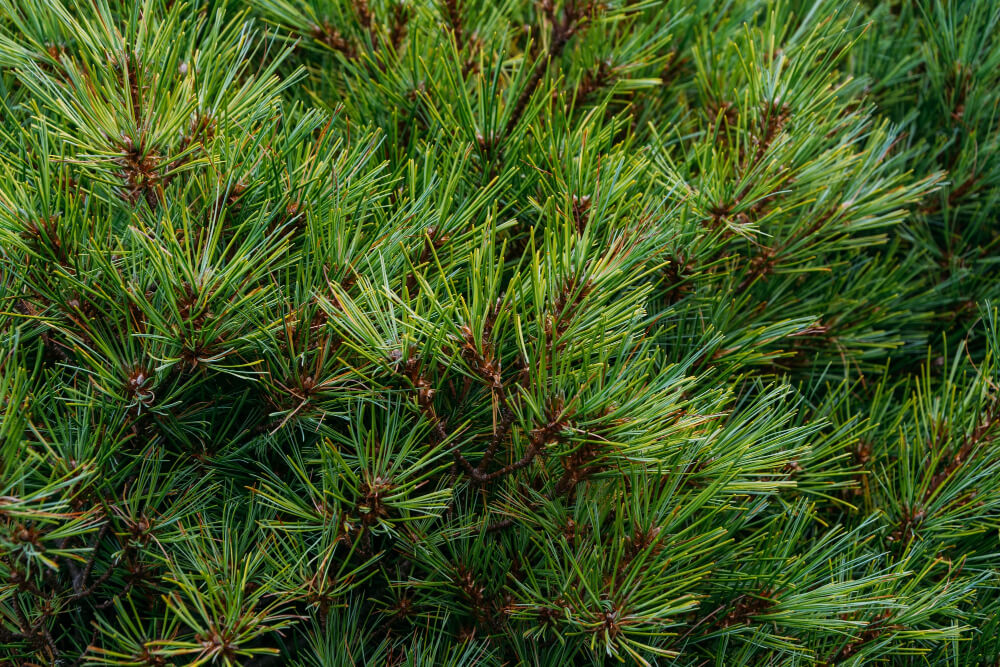
Photo Source: Freepik
A signature tree in Japanese gardens, the Black Pine is often pruned and shaped to create a striking architectural form. Native to coastal regions of Japan, this resilient pine is known for its dark green needles and rugged, twisting trunk. Its naturally windswept appearance brings a sense of age and wisdom to the garden. Black Pines are often used in Niwaki, the art of ornamental tree shaping, which adds an intentional and artistic touch to the landscape.
To maintain the health and beauty of your Black Pine, plant it in well-drained soil in a location with full sunlight. It is drought-tolerant once established, making it a great choice for the Bay Area’s Mediterranean climate. Regular pruning is essential to enhance its sculptural shape and encourage balanced growth. With its timeless presence, a Black Pine adds both structure and elegance to your high-end estate landscaping.
Japanese Cedar (Cryptomeria japonica)
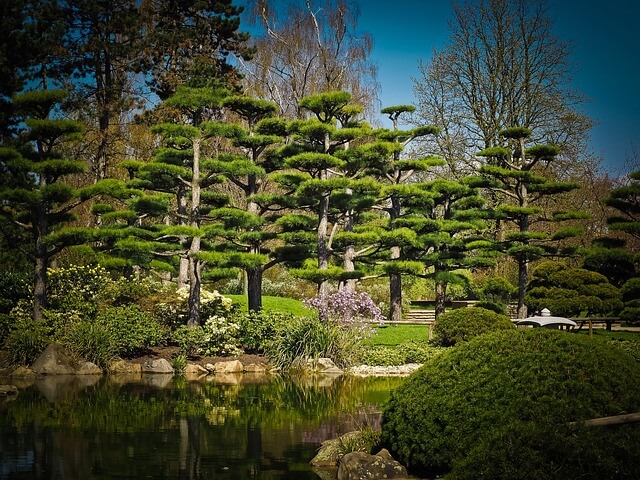
Photo Source: Pixabay
The Japanese Cedar, or Cryptomeria, is a towering evergreen that brings a sense of serenity and grandeur to Japanese gardens. Its soft, feathery foliage ranges from bright green in summer to bronze in winter, offering seasonal interest year-round. In traditional gardens, Cryptomeria is often planted in groves to create a peaceful, forest-like atmosphere. The tree’s elegant, narrow form makes it ideal for creating privacy screens or serving as a majestic focal point.
Japanese Cedars prefer full sun to partial shade and thrive in well-drained, slightly acidic soil. Regular watering is necessary, especially during dry spells, to keep the soil consistently moist. With minimal pruning required, these trees are relatively low-maintenance and can live for decades, making them an excellent long-term investment for estate owners. In the Bay Area, their towering presence adds a calming, natural element to luxury landscape designs.
Camphor Tree (Cinnamomum camphora)
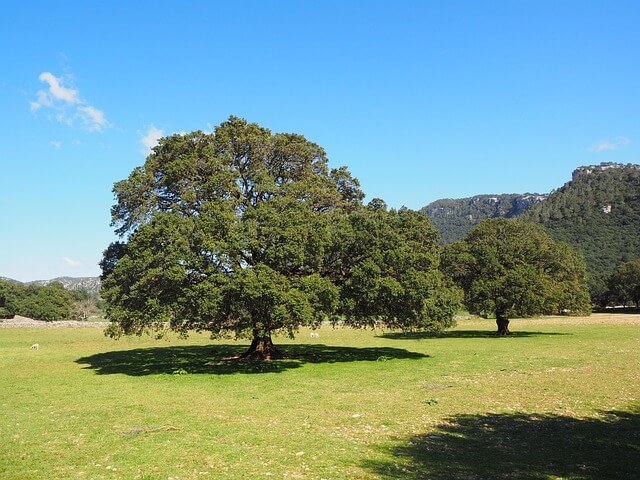
Photo Source: Pixabay
The Camphor Tree is a stunning addition to Japanese gardens, offering both shade and aromatic charm. Known for its glossy, vibrant green leaves and spreading canopy, this evergreen can grow up to 50 feet tall. Its bark develops a textured, aged appearance, enhancing the tree’s character as it matures. In the spring, clusters of small, fragrant flowers bloom, followed by dark berries that attract birds.
Camphor Trees thrive in full sun and well-drained soil, making them a perfect choice for Bay Area landscape design. Regular watering during the establishment phase is essential, but mature trees are drought-tolerant and relatively low-maintenance. With their rich cultural significance and natural beauty, Camphor Trees add both visual appeal and a sense of tranquility to high-end estate landscapes.
Japanese Apricot (Prunus mume)
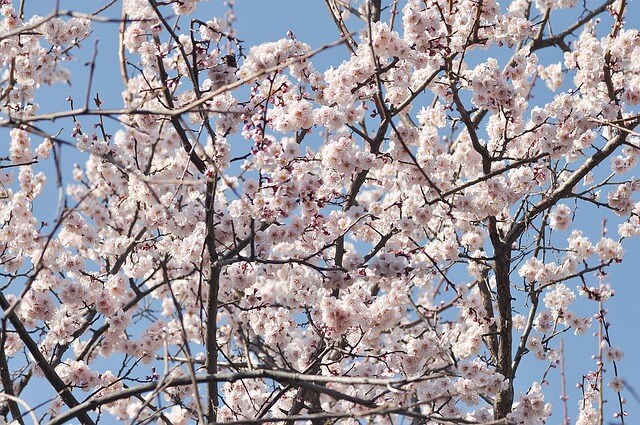
Photo Source: Pixabay
For a vibrant burst of color in the winter months, the Japanese Apricot is an exceptional choice. Blooming in late winter to early spring, its delicate pink or white blossoms are often the first sign of the changing seasons. Known as “Ume” in Japan, this tree has been a symbol of perseverance and renewal for centuries. The blossoms release a sweet fragrance, making them a delightful sensory addition to any Japanese garden.
Japanese Apricots grow best in full sun and well-drained soil enriched with organic matter. They are relatively drought-tolerant once established but will benefit from regular watering during dry spells. Pruning after flowering helps maintain their shape and encourages more blooms in the following season. Estate owners looking for a tree that brings both beauty and cultural symbolism to their Bay Area landscape will find the Japanese Apricot an ideal choice.
Japanese Pagoda Tree (Styphnolobium japonicum)
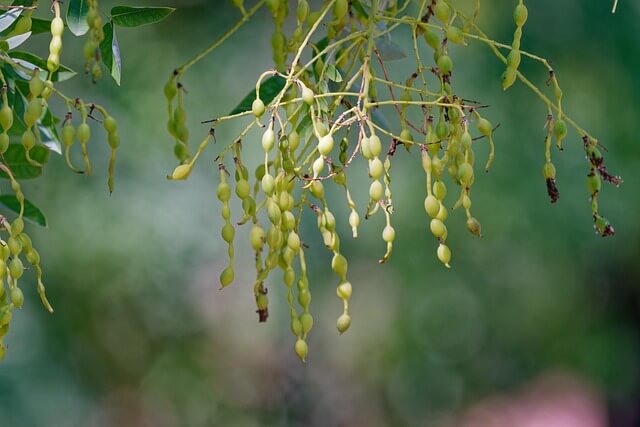
Photo Source: Pixabay
The Japanese Pagoda Tree, also known as the Scholar Tree, offers a graceful silhouette with its cascading branches and feathery leaves. In late summer, it blooms with clusters of creamy white flowers that attract pollinators. Its tolerance for urban conditions and drought makes it a practical yet elegant choice for larger landscapes. Historically, this tree has been planted around temples and gardens in Japan, adding a sense of sacred tranquility.
In the Bay Area, Japanese Pagoda Trees prefer full sun and well-drained soil. They are relatively low-maintenance and require occasional pruning to maintain their shape. As a long-lived tree, it provides decades of beauty and shade. The dappled sunlight filtering through its foliage creates a calming ambiance, making it a perfect addition to a luxury Japanese garden design.
Design Principles for a Japanese Garden in the Bay Area
Creating a Japanese garden is an art form that blends nature, culture, and mindfulness. While every Japanese garden is unique, there are a few timeless principles that guide its design. Whether you have a spacious estate or a cozy backyard, these principles will help you achieve an authentic and serene landscape.
Simplicity and Balance: Japanese gardens emphasize minimalism. Avoid clutter and focus on creating clean, open spaces. Every element, from rocks to trees, should have a purpose and contribute to the overall harmony.
Natural Asymmetry: Unlike Western gardens that often value symmetry, Japanese gardens embrace natural, uneven shapes. Placing trees like Star Magnolias or Black Pines off-center can create a more dynamic and visually interesting scene.
Seasonal Interest: A Japanese garden changes with the seasons. Choose trees like Japanese Apricots for their vibrant winter blooms, or Flowering Cherry Trees that celebrate the arrival of spring. Camphor Trees provide evergreen appeal, while Japanese Cedars transition from green to bronze in colder months.
Symbolism and Storytelling: Traditional Japanese gardens often use elements like rocks, water, and trees to symbolize landscapes such as mountains, rivers, and forests. For example, a carefully shaped Black Pine may represent an ancient tree standing resilient against the elements.
Water Features and Bridges: Including a koi pond, a gentle stream, or a simple water basin can enhance tranquility. A Japanese Pagoda Tree nearby can provide shade and add a meditative presence to the water’s edge.
Maintenance Tips for a Thriving Japanese Garden
Maintaining a Japanese garden involves thoughtful care and attention to detail. Each tree, shrub, and feature contributes to the garden’s peaceful ambiance, so proper upkeep is essential.
Pruning and Shaping: Trees like Black Pines and Japanese Cedars benefit from regular pruning to enhance their natural form. Niwaki pruning, a traditional Japanese technique, sculpts trees to mimic natural landscapes.
Soil and Fertilization: Most Japanese garden trees prefer soil rich in organic matter. Trees like Star Magnolias and Flowering Cherries thrive in slightly acidic, well-drained soil. Add compost seasonally to maintain soil health.
Watering Practices: Young trees need regular watering to establish strong root systems. Established trees, especially drought-tolerant varieties like Black Pines, require less frequent watering. Monitor the moisture levels during dry spells, particularly in the Bay Area’s Mediterranean climate.
Pest and Disease Management: Keep an eye out for signs of pests or diseases. Flowering Cherry Trees, for example, are susceptible to bark splitting in fluctuating temperatures. Consult with local landscape designers for preventative care and treatment.
Seasonal Adjustments: Mulch around the base of trees in the winter to protect roots from frost. During spring, apply a balanced fertilizer to encourage vibrant blooms from Japanese Apricots and Star Magnolias.
Why Work with Bay Area Landscape Designers
Designing a Japanese garden is a rewarding endeavor, but it requires expert knowledge of tree care, landscape aesthetics, and regional conditions. Partnering with experienced Bay Area landscape designers ensures your garden will thrive and remain beautiful for years to come.
Professional landscape designers understand the nuances of Japanese garden design and can recommend the best tree selections based on your space, soil type, and aesthetic preferences. They also provide guidance on incorporating water features, stone pathways, and other traditional elements.
Additionally, high-end estate landscaping involves maintaining a polished and harmonious look. Landscape designers offer regular maintenance services to keep your trees pruned, pathways clear, and water features pristine. With their expertise, you can enjoy a breathtaking Japanese garden without the stress of upkeep.
A Japanese garden is more than just a landscape — it’s a reflection of nature’s beauty and a sanctuary of peace. From the graceful blooms of a Flowering Cherry to the architectural presence of a Black Pine, every tree contributes to the serene atmosphere. Whether you’re creating a private retreat or enhancing your estate’s curb appeal, selecting the right trees will bring your vision to life.
Are you ready to transform your Bay Area property into a serene Japanese-inspired landscape? Which trees will you choose to shape your personal oasis?
